
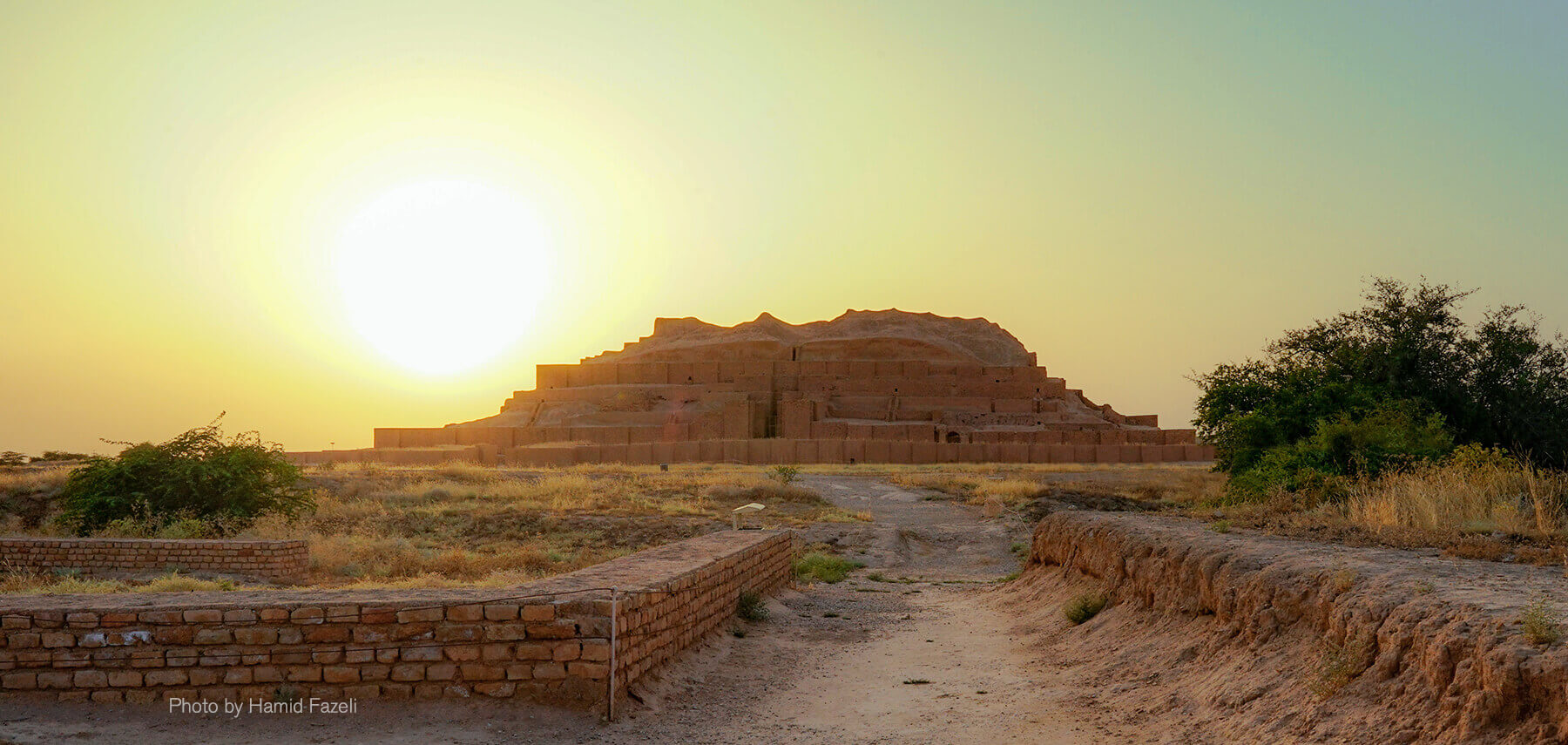
Chogha Zanbil Ziggurat is an ancient The Elamite temple complex in Khuzestan province, 30 km southeast of Susa. The site is one of the largest and best-preserved ziggurats out of Mesopotamia. Chogha Zanbil was founded by the king of Elamite Untash-Napirisha (1250 BCE) who dedicated it to one the Elamite gods named Inshushinak the guardian of Susa. READ MORE
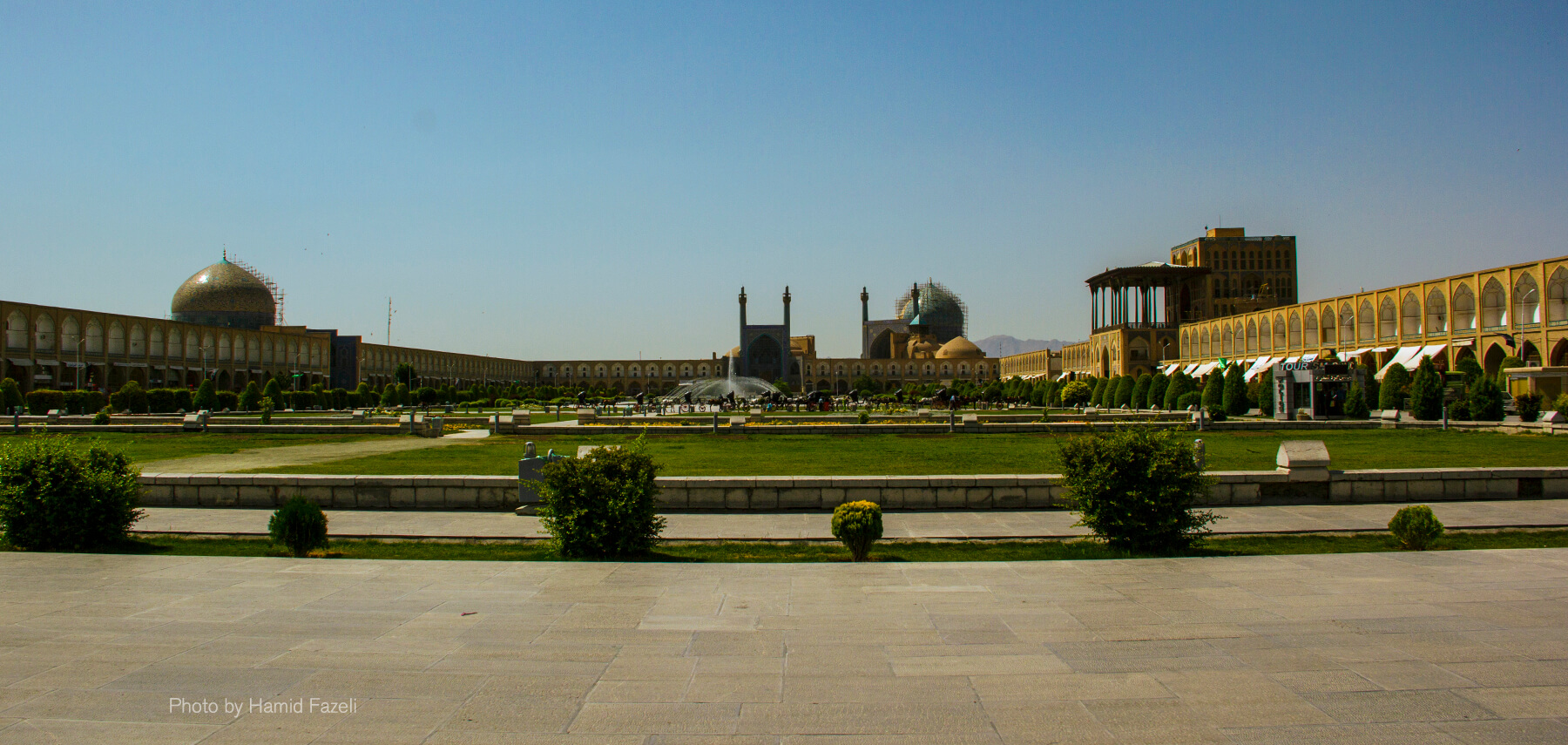
Isfahan Naghshe Jahan Square is one of the main tourist attractions of turquoise domes. It has a number of buildings in its heart, each of which is unique in its kind, including Shah mosque, Sheikh Lotfollah mosque, Aliqapu Palace, and Qaiserieh old bazaar. You can find various kinds of traditional souvenirs of Isfahan around this square. In addition, tourists can enjoy a Persian meal in traditional restaurants around the Square. READ MORE
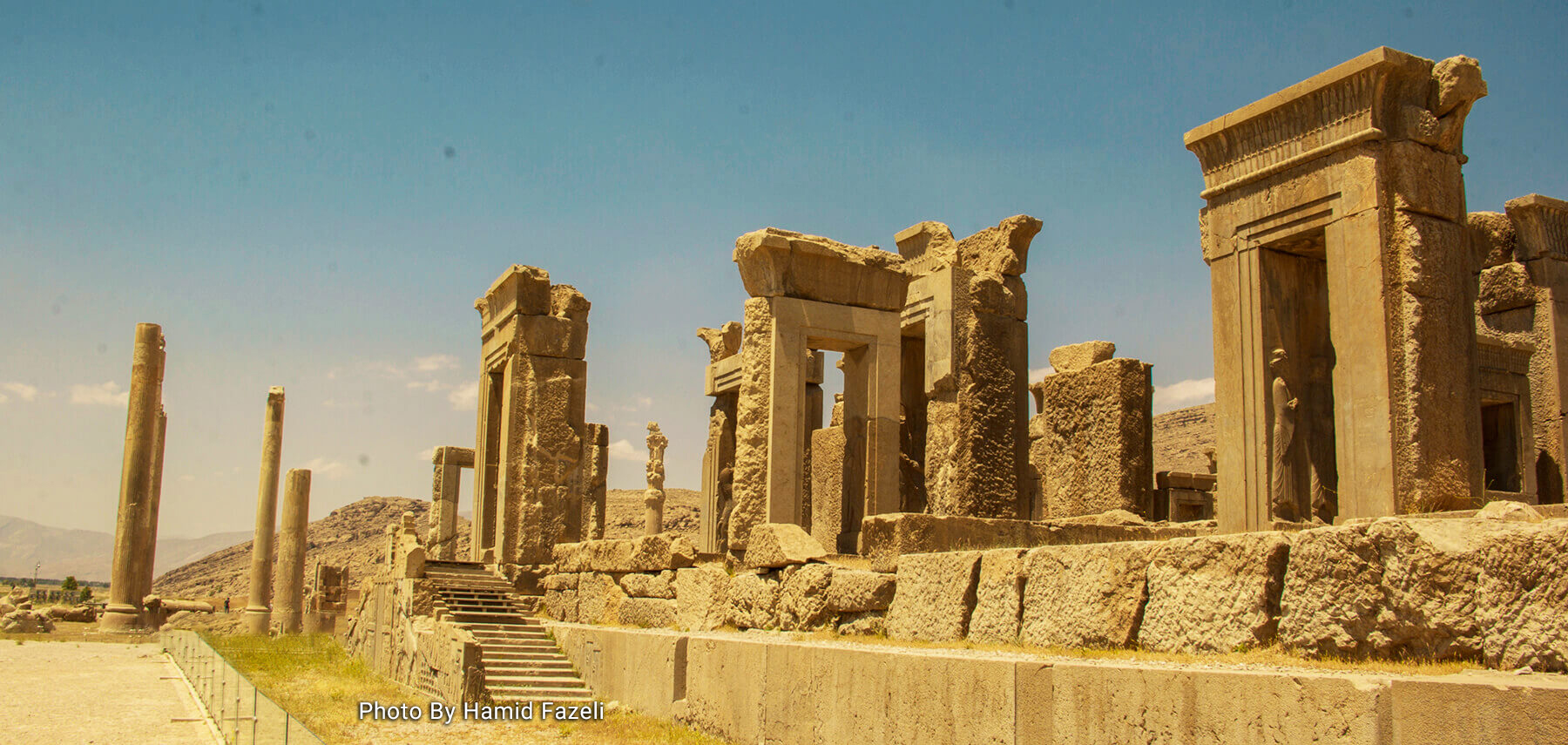
Persepolis is a complex of magnificent palaces that began in the year 512 BC and lasted for 150 years. Persepolis is located in a vast area on one side of Mount Rahmat and Marvdasht on the other. Persepolis was not only a capital of the Achaemenid era and a central ceremonial, administrative, and economic center, but also a model for the art of subsequent nations. READ MORE
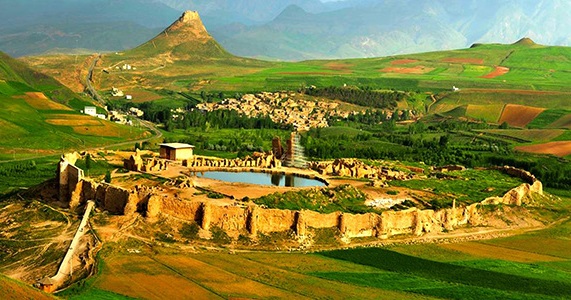
The archaeological ensemble called Takht-e Soleyman (“Throne of Solomon”) is situated on a remote plain surrounded by mountains in northwestern Iran’s West Azerbaijan province. The site has strong symbolic and spiritual significance related to fire and water – the principal reason for its occupation from ancient times – and stands as an exceptional testimony of the continuation of a cult related to fire and water over a period of some 2,500 years. Located here, in a harmonious composition inspired by its natural setting, are the remains of an exceptional ensemble of royal architecture of Persia’s Sasanian dynasty (3rd to 7th centuries). Integrated with the palatial architecture is an outstanding example of Zoroastrian sanctuary; this composition at Takht-e Soleyman can be considered an important prototype.
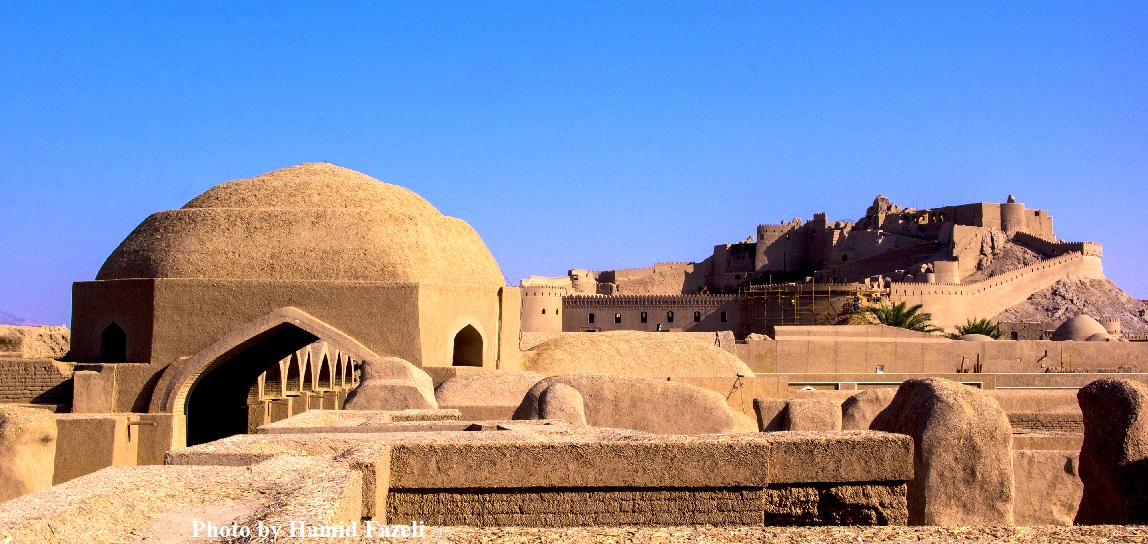
Arg e Bam, the world’s largest adobe monument, is one of Iran’s most important and valuable landmarks. This great historical complex was built on a huge cliff near the city of Bam in Kerman province. Built on the Abrisham Road in the 5th century BC, the monument was used until 1850 AD by common people. READ MORE
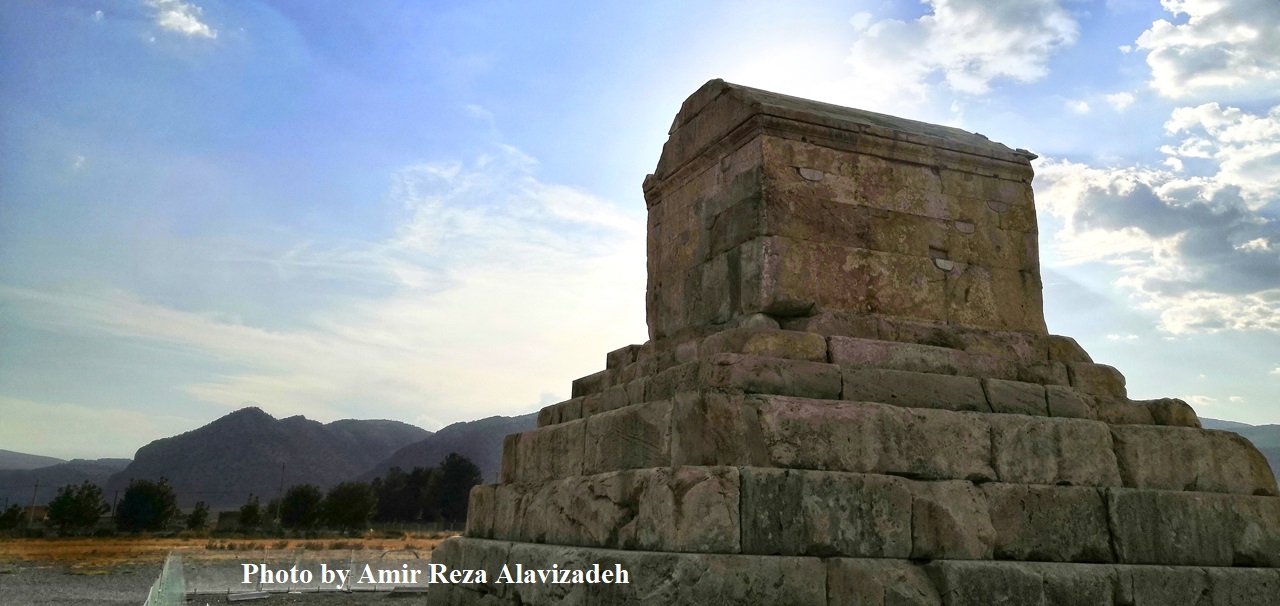
Pasargadae was the first dynastic capital of the Achaemenid Empire, founded by Cyrus II the Great, in Pars, homeland of the Persians, in the 6th century BC. Its palaces, gardens and the mausoleum of Cyrus are outstanding examples of the first phase of royal Achaemenid art and architecture and exceptional testimonies of Persian civilization. Particularly noteworthy vestiges in the 160-ha site include the Mausoleum of Cyrus II; Tall-e Takht, a fortified terrace; and a royal ensemble of gatehouse, audience hall, residential palace and gardens. Pasargadae was the capital of the first great multicultural empire in Western Asia. Spanning the Eastern Mediterranean and Egypt to the Hindus River, it is considered to be the first empire that respected the cultural diversity of its different peoples. This was reflected in Achaemenid architecture, a synthetic representation of different cultures.
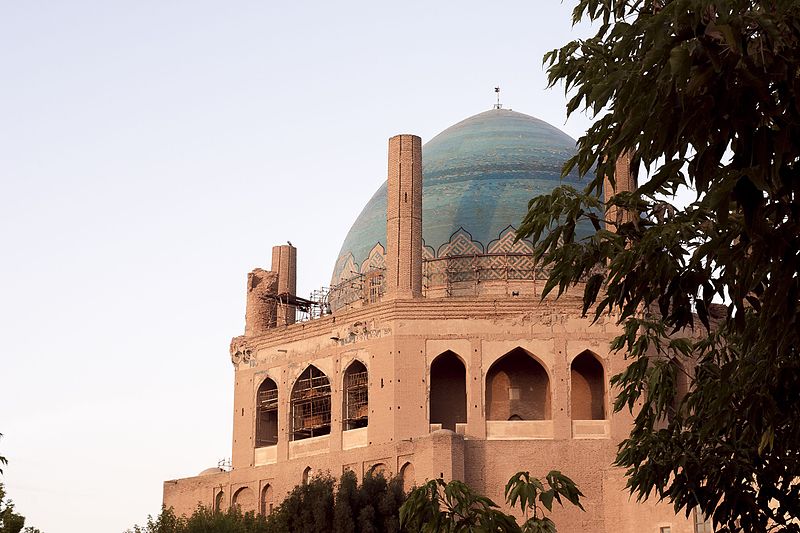
The mausoleum of Oljaytu was constructed in 1302–12 in the city of Soltaniyeh, the capital of the Ilkhanid dynasty, which was founded by the Mongols. Situated in the province of Zanjan, Soltaniyeh is one of the outstanding examples of the achievements of Persian architecture and a key monument in the development of its Islamic architecture. The octagonal building is crowned with a 50 m tall dome covered in turquoise-blue faience and surrounded by eight slender minarets. It is the earliest existing example of the double-shelled dome in Iran. The mausoleum’s interior decoration is also outstanding and scholars such as A.U. Pope has described the building as ‘anticipating the Taj Mahal’.
SEE MORE
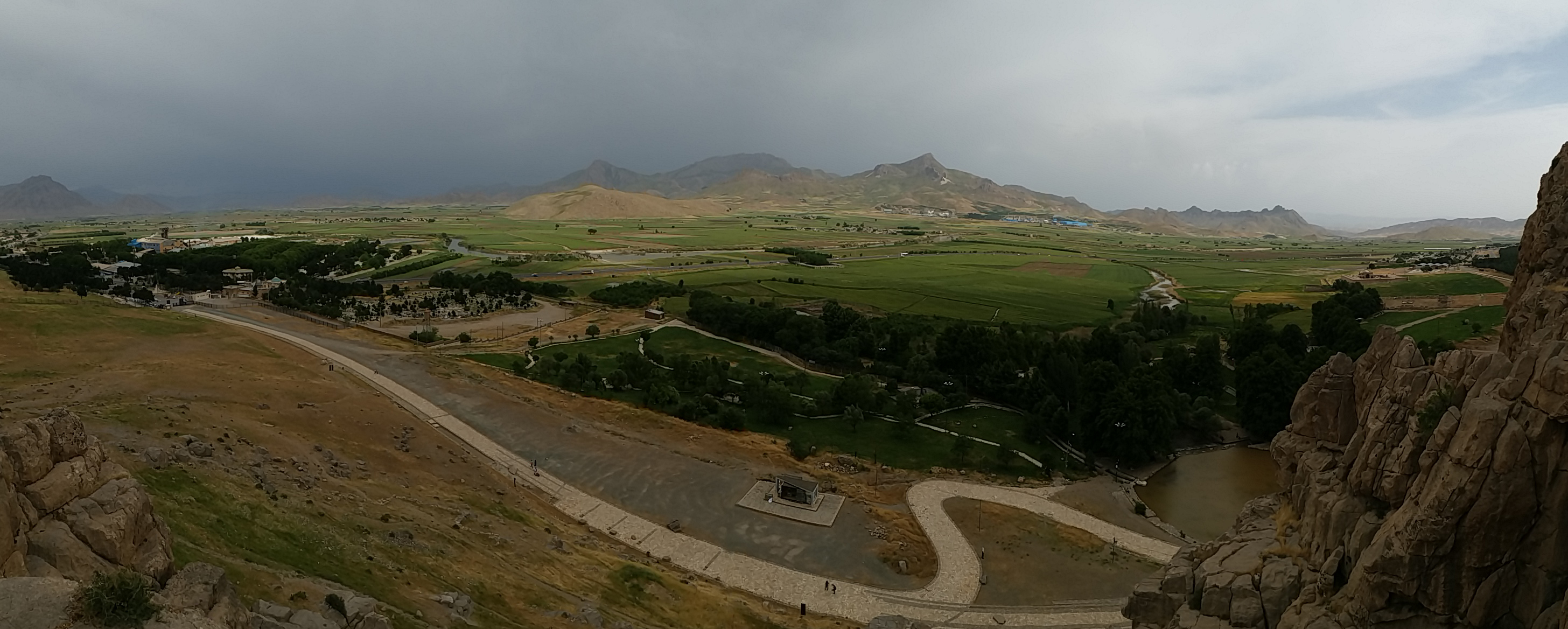
If you travel to western Iran, visiting Bisotun in Kermanshah province is a must. It is one of the gorgeous, can’t-miss destinations of this part of the country, which is of high importance among Iranian people. Because of its unique characteristics, many domestic and foreign travelers visit Bisotun each year. As well as its historic features and rich background, it is an important destination for mountain climbers. The Bisotun wall is 5km wide and has a 1200-meters vertical rock. It is a great place for adventurous climbers who seek challenging destinations.
SEE MORE
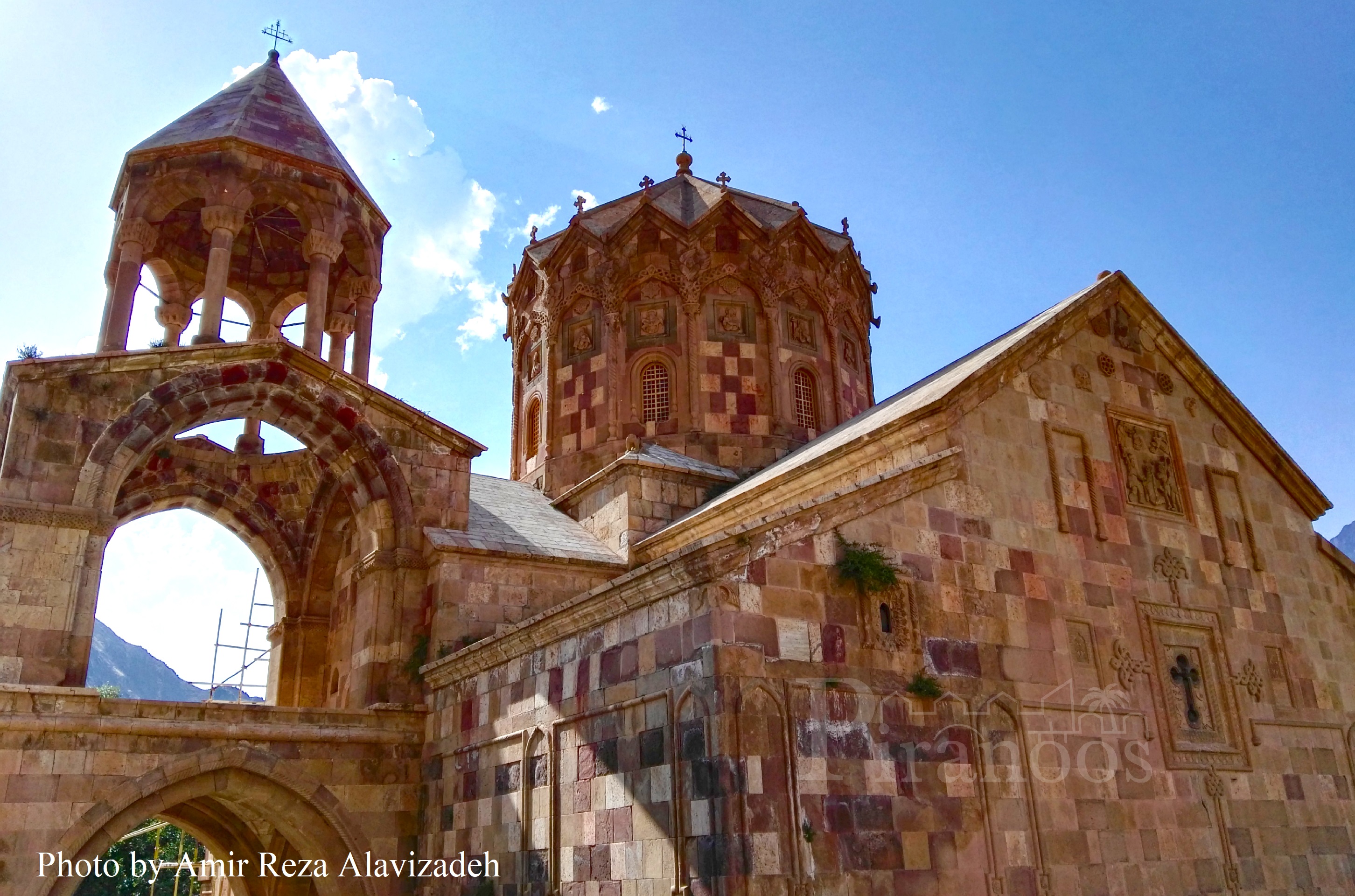
The Armenian Monastic Ensembles of Iran, in the north-west of the country, consists of three monastic ensembles of the Armenian Christian faith: St Thaddeus and St Stepanos and the Chapel of Dzordzor. These edifices – the oldest of which, St Thaddeus, dates back to the 7th century – are examples of the outstanding universal value of the Armenian architectural and decorative traditions. They bear testimony to very important interchanges with the other regional cultures, in particular, the Byzantine, Orthodox, and Persian. Situated on the south-eastern fringe of the main zone of the Armenian cultural space, the monasteries constituted a major center for the dissemination of that culture in the region. They are the last regional remains of this culture that are still in a satisfactory state of integrity and authenticity. Furthermore, as places of pilgrimage, the monastic ensembles are living witnesses of Armenian religious traditions through the centuries.
SEE MORE
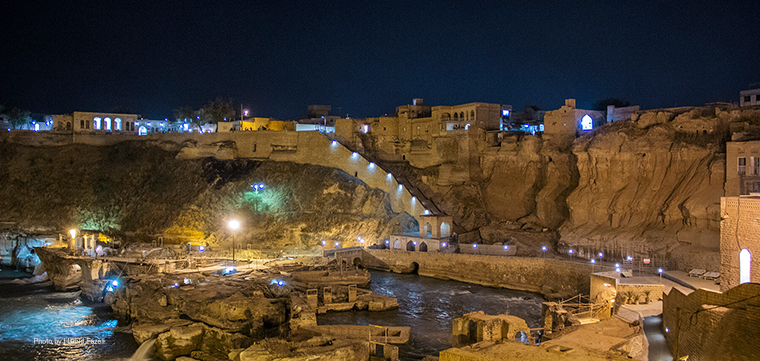
A huge and complex water structure was built in Shushtar during Sassanid era which is comprised of interconnected bridges, dams, water mills, waterfalls, canals, and large water tunnels (built during the Achaemenid era). The structure now known as the Shushtar historical hydraulic system has been referred to as “a masterpiece of creative genius” by UNESCO. Homogeneously and globally designed and completed in the 3rd century, construction of this hydraulic system in addition to its diverse engineering had and has various uses such as supplying water to urban areas and mills, irrigation and river transport. It also acted as a defensive system where the deflected channel from the Karun River formed a moat around the city. SEE MORE
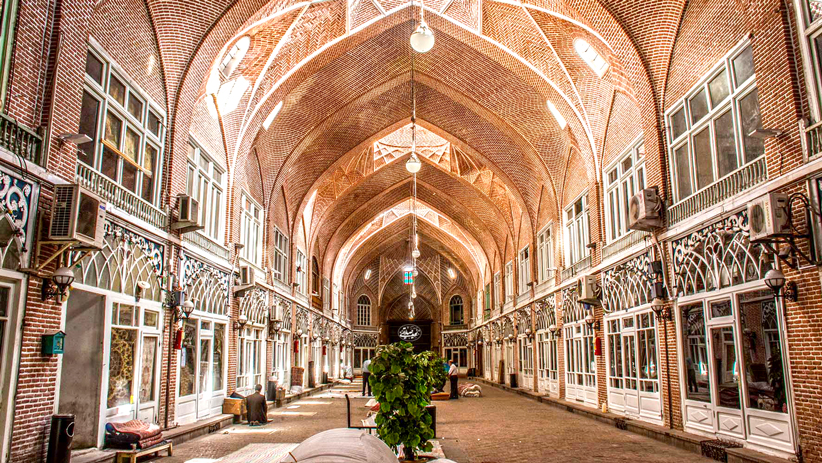
Tabriz has been a place of cultural exchange since antiquity and its historic bazaar complex is one of the most important commercial centers on the Silk Road. Tabriz Historic Bazaar Complex consists of a series of interconnected, covered, brick structures, buildings, and enclosed spaces for different functions. Tabriz and its Bazaar were already prosperous and famous in the 13th century, when the town, in the province of Eastern Azerbaijan, became the capital city of the Safavid kingdom. The city lost its status as capital in the 16th century but remained important as a commercial hub until the end of the 18th century, with the expansion of Ottoman power. It is one of the most complete examples of the traditional commercial and cultural system of Iran. SEE MORE
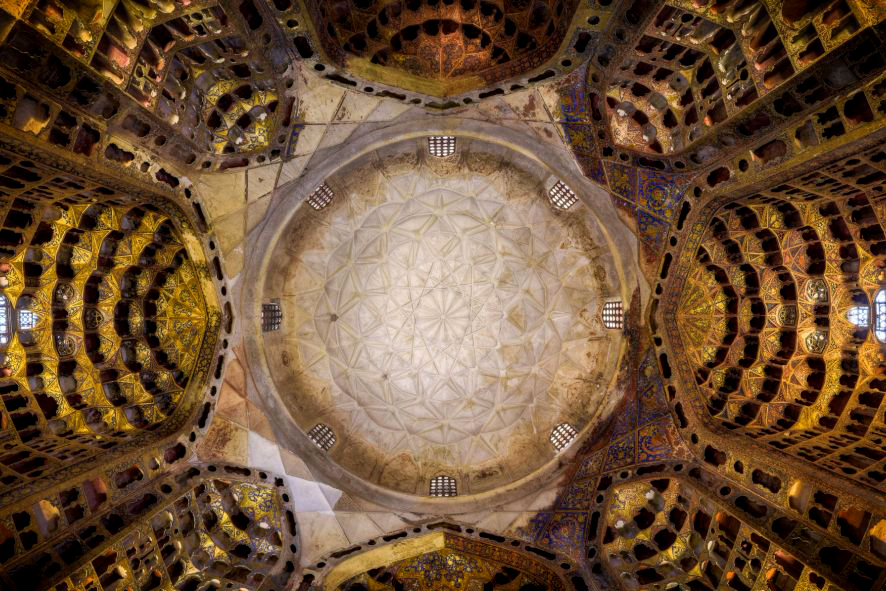
Built between the beginning of the 16th century and the end of the 18th century, this place of spiritual retreat in the Sufi tradition uses Iranian traditional architectural forms to maximize use of available space to accommodate a variety of functions (including a library, a mosque, a school, mausolea, a cistern, a hospital, kitchens, a bakery, and some offices). It incorporates a route to reach the shrine of the Sheikh divided into seven segments, which mirror the seven stages of Sufi mysticism, separated by eight gates, which represent the eight attitudes of Sufism. The ensemble includes well-preserved and richly ornamented facades and interiors, with a remarkable collection of antique artifacts. It constitutes a rare ensemble of elements of medieval Islamic architecture.
SEE MORE
The property includes nine gardens in as many provinces. They exemplify the diversity of Persian garden designs that evolved and adapted to different climate conditions while retaining principles that have their roots in the times of Cyrus the Great, 6th century BC. Always divided into four sectors, with water playing an important role for both irrigation and ornamentation, the Persian garden was conceived to symbolize Eden and the four Zoroastrian elements of sky, earth, water, and plants. These gardens, dating back to different periods since the 6th century BC, also feature buildings, pavilions, and walls, as well as sophisticated irrigation systems. They have influenced the art of garden design as far as India and Spain.
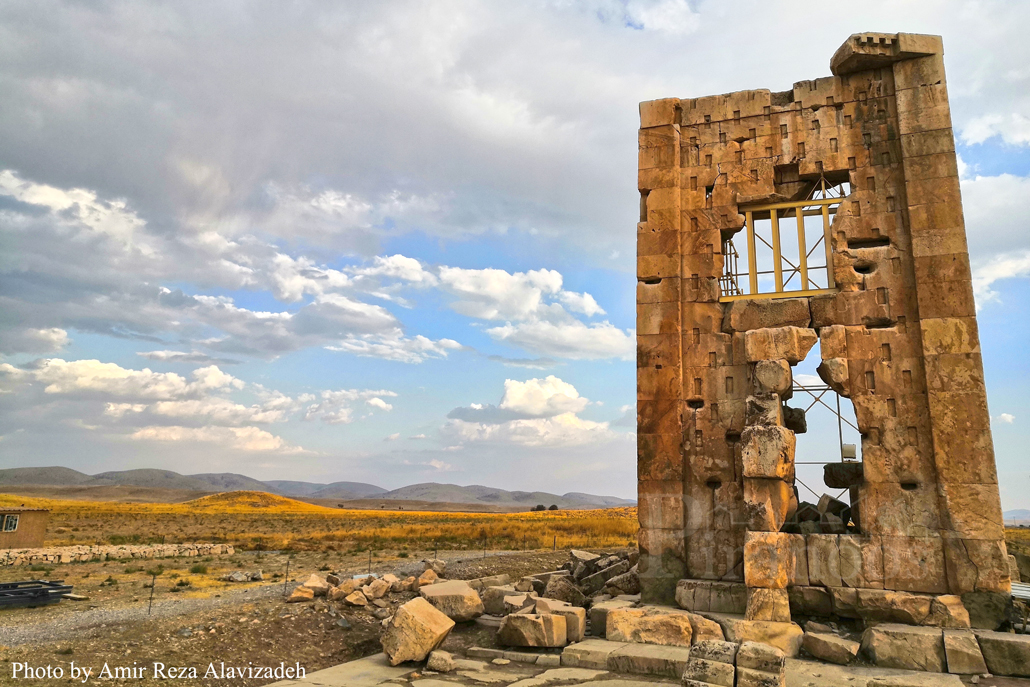
The garden was famous Bagh-e-Shah in past and UNESCO submitted it as world heritage in 2012. The reason for naming the garden is due to being located in the Fin of Kashan. Fin is the name of the traditional hat that people used to wear in the old day. This garden was built on the order of Shah-Abbas. Some historians believe that the famous Persian mathematician “Ghyath al-Din Jamshid Kashani” was the architect of Fin Garden and some of the others attribute it to “Shaykh Bahai”.SEE MORE
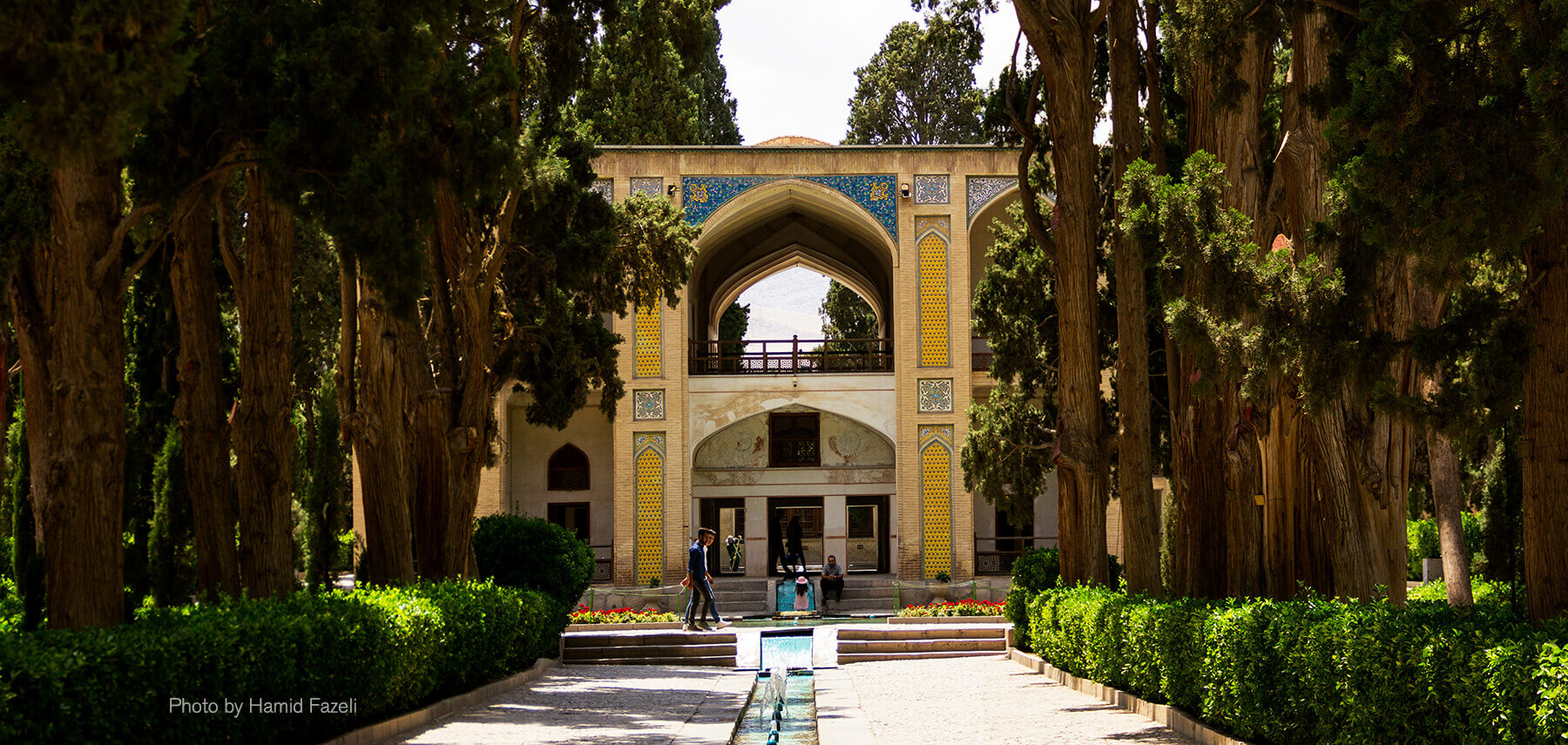
Kashan can be considered a miracle, a lush city in the middle of the desert. You can find this feature on each site of Kashan. Most of the people know Kashan because of Fin Garden. Fin Garden is famous for reminding of a most bitter incident in Iranian history more than its beauties and glories. Amir Kabir the patriotism chief minister of the Qajar era was killed in this garden by order of Naser al-Din Shah in 1852.SEE MORE
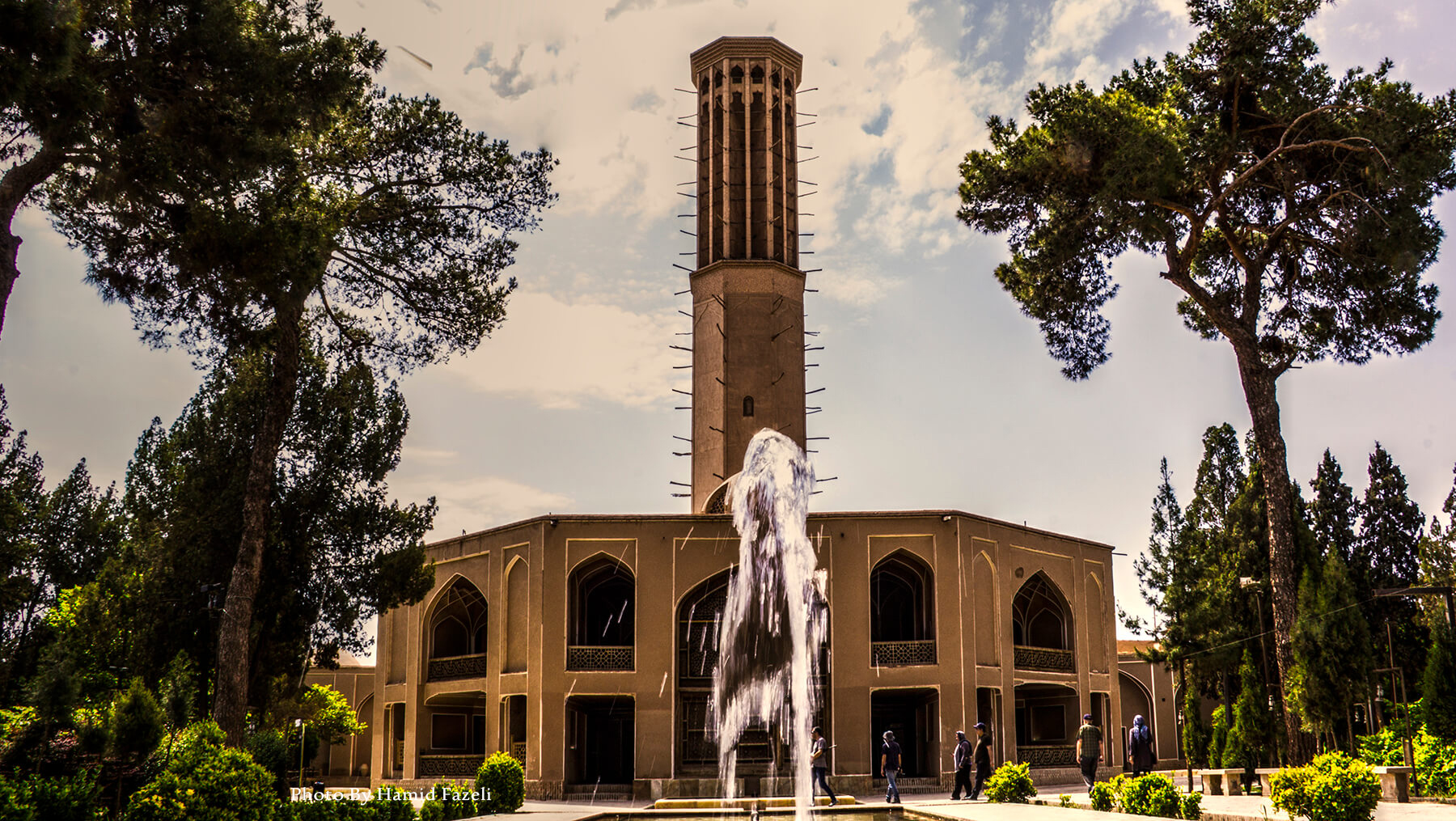
Garden played an important role in Iran to show the majesty of the state. Iranians had a special interest in building a garden around the mansions as if they were trying to make their image of paradise on earth as reality. Although Yazd province has a desert climate and its people have always suffered from the lake of water resources, however, this province has several beautiful Iranian gardens.SEE MORE
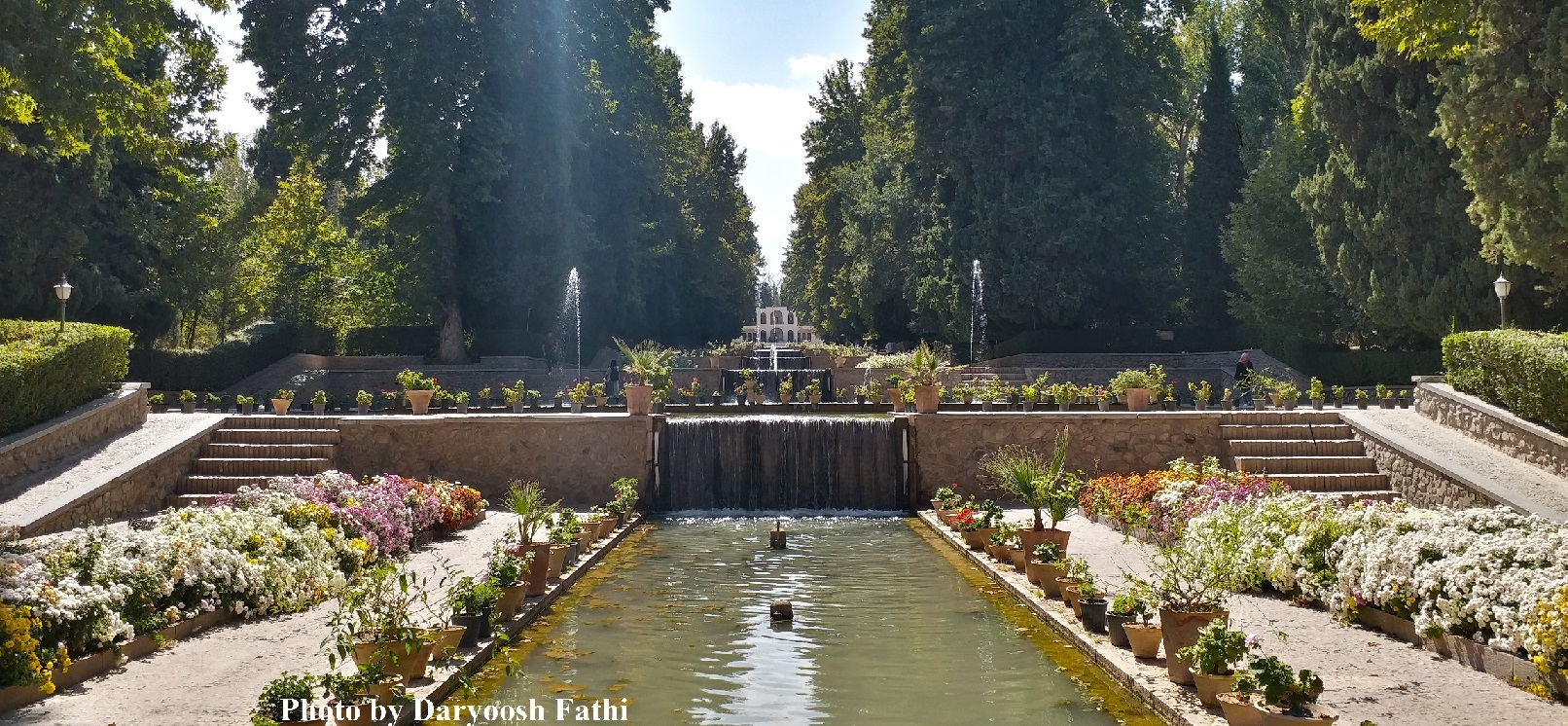
Shazdeh Mahan Garden is one of the magnificent historic gardens of Iran. This garden is about 2 kilometers from the city of Mahan, near the city of Kerman, on the slopes of the Tigran Mountains and was built at the end of the Qajar period. The garden was first built by the order of the ruler of Kerman, Mohammad Hassan Khan Iravani, and the building was later built by Abdul Hamid Mirza Nasser al-Douleh, the ruler of Kerman, during his eleven years of rule (1298 AH to 1309 AH).SEE MORE
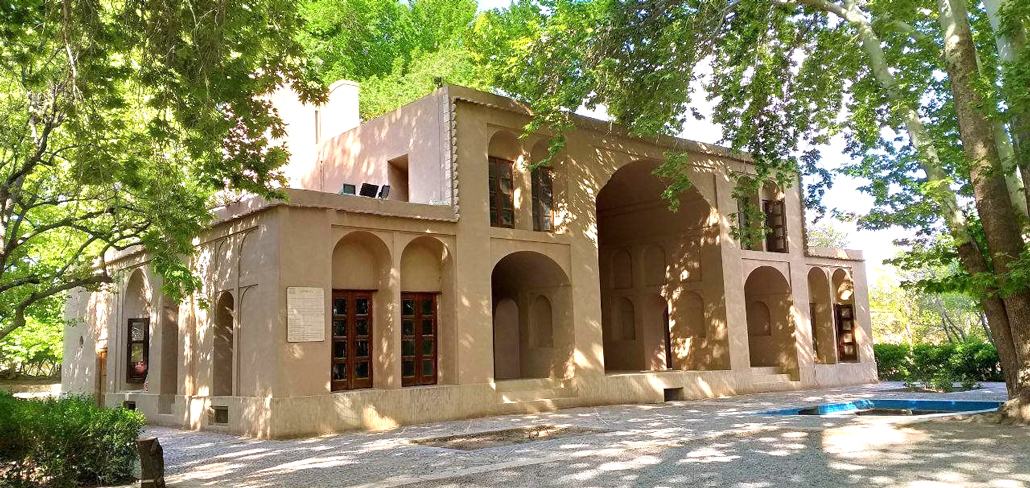
SEE MORE
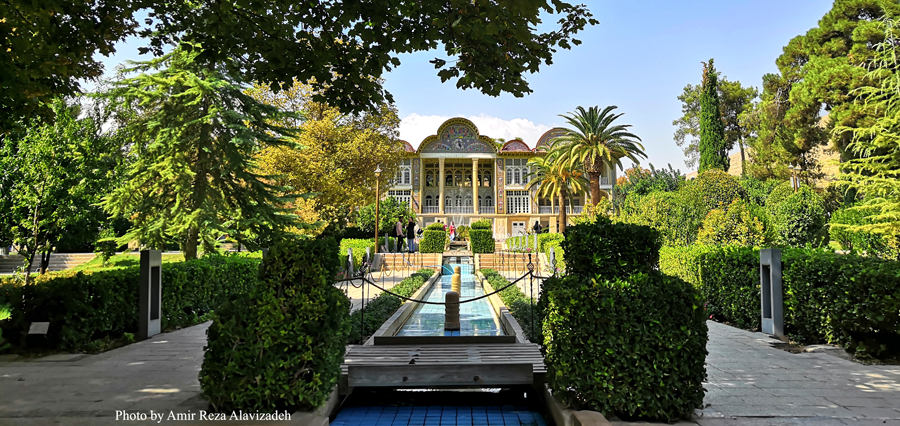
The name of Iran has intertwined with Persian civilization, Persian carpets, Persian cats and most importantly, Persian gardens! Garden is an important element in Iranian design and plays an essential role in Iranian architecture. The aim of the traditional style of Persian or Iranian gardens is to show an example of the paradise garden on earth. The beauty and the philosophy behind Persian gardens have influenced the design of gardens all around the world. Many similar examples exist in different countries such as Alhambra garden in Spain to India and beyond.SEE MORE
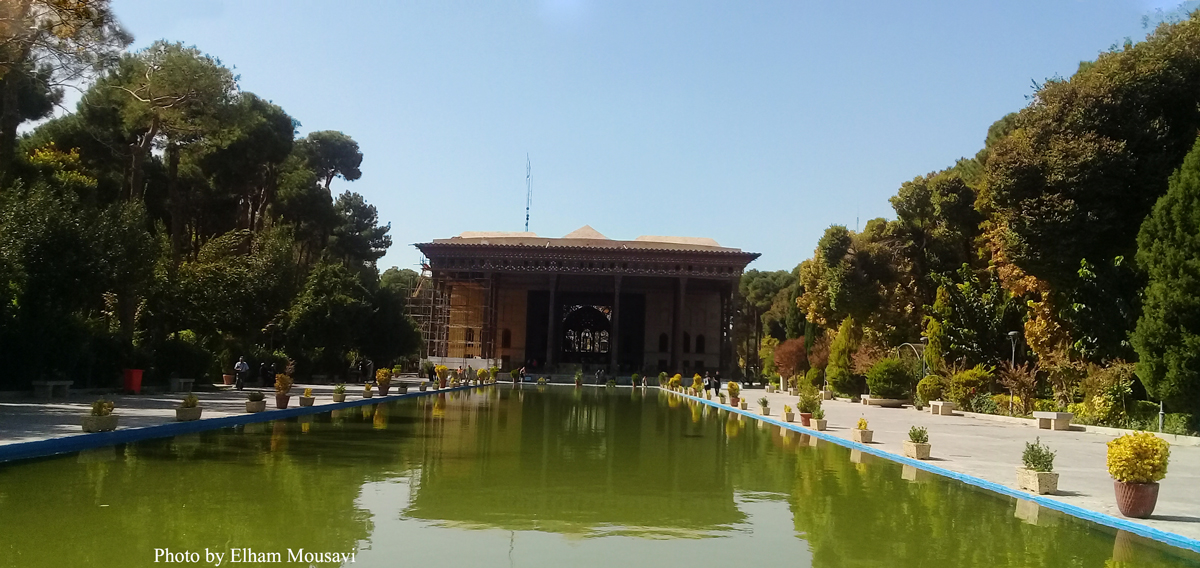
Chehel Sotun Palace, depicted on the inscription of its date, called the most blessed building of the world, is one of the most beautiful memorials of Safavid era in today’s Isfahan. The stone sculptures around the pond and inside the gardens are the only works that have remained from the two other magnificent Safavid palaces. The four statues at the corners of the garden pool are symbols of Anahita, goddess of water.SEE MORE
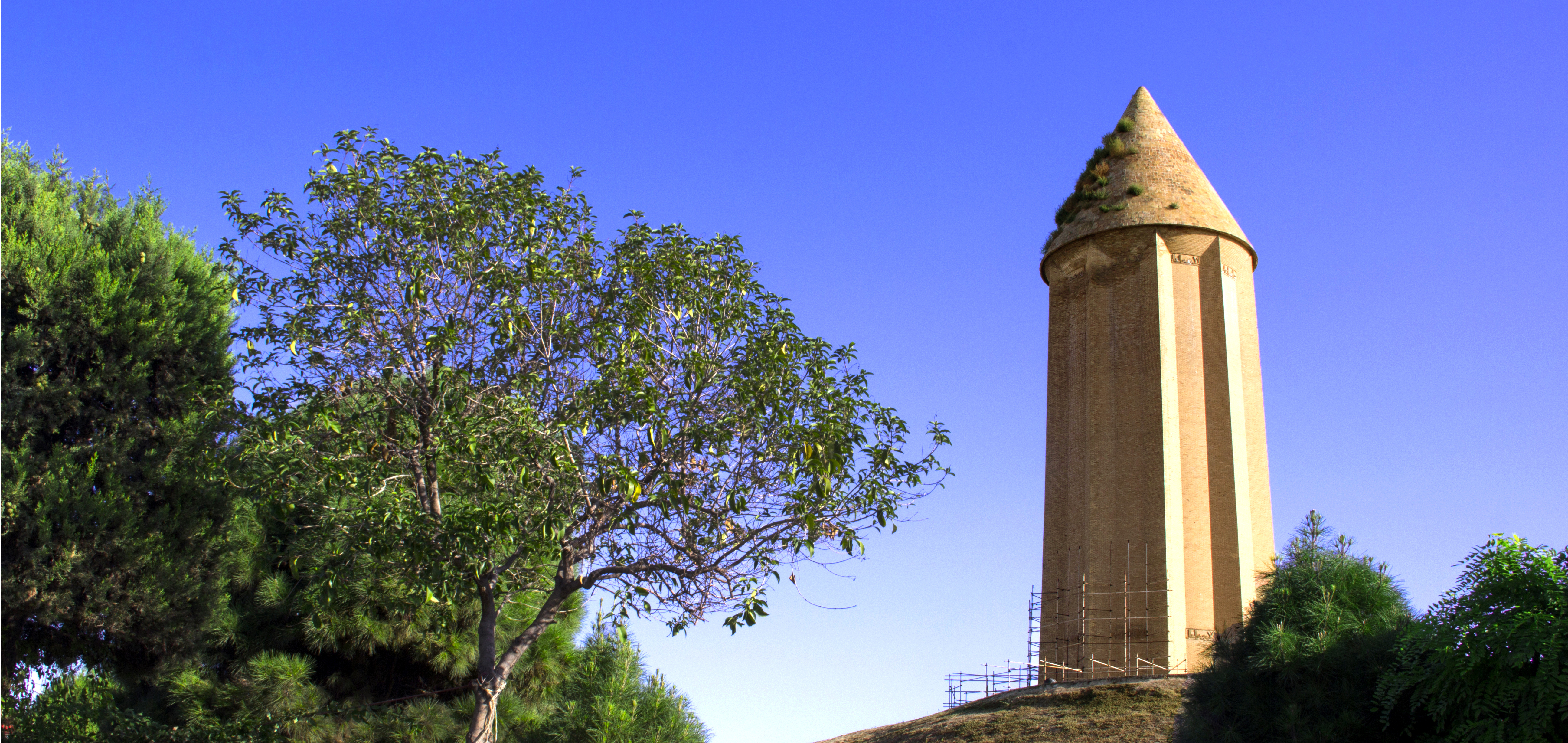
The 53 m high tomb built-in ad 1006 for Qābus Ibn Voshmgir, Ziyarid ruler and literati, near the ruins of the ancient city of Jorjan in north-east Iran, bears testimony to the cultural exchange between Central Asian nomads and the ancient civilization of Iran. The tower is the only remaining evidence of Jorjan, a former center of arts and science that was destroyed during the Mongols’ invasion in the 14th and 15th centuries. It is an outstanding and technologically innovative example of Islamic architecture that influenced sacral buildings in Iran, Anatolia, and Central Asia. Built of unglazed fired bricks, the monument’s intricate geometric forms constitute a tapering cylinder with a diameter of 17–15.5 m, topped by a conical brick roof. It illustrates the development of mathematics and science in the Muslim world at the turn of the first millennium AD. SEE MORE
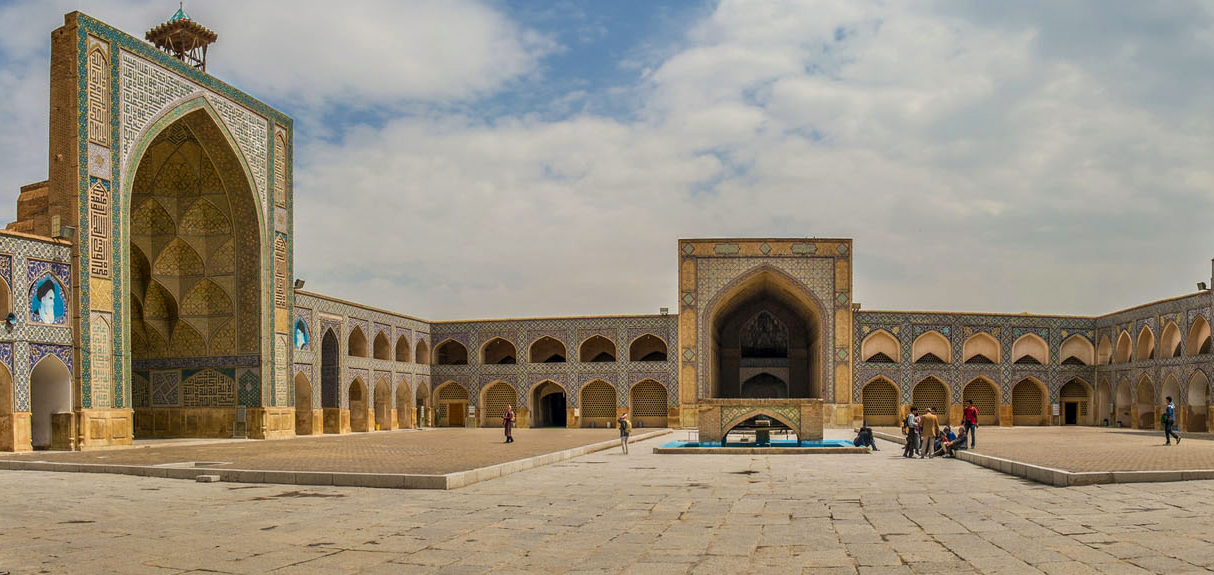
Located in the historic center of Isfahan, the Masjed-e Jāmé (‘Friday mosque’) can be seen as a stunning illustration of the evolution of mosque architecture over twelve centuries, starting in ad 841. It is the oldest preserved edifice of its type in Iran and a prototype for later mosque designs throughout Central Asia. The complex, covering more than 20,000 m2, is also the first Islamic building that adapted the four courtyard layout of Sassanid palaces to Islamic religious architecture. Its double-shelled ribbed domes represent an architectural innovation that inspired builders throughout the region. The site also features remarkable decorative details representative of stylistic developments over more than a thousand years of Islamic art. SEE MORE
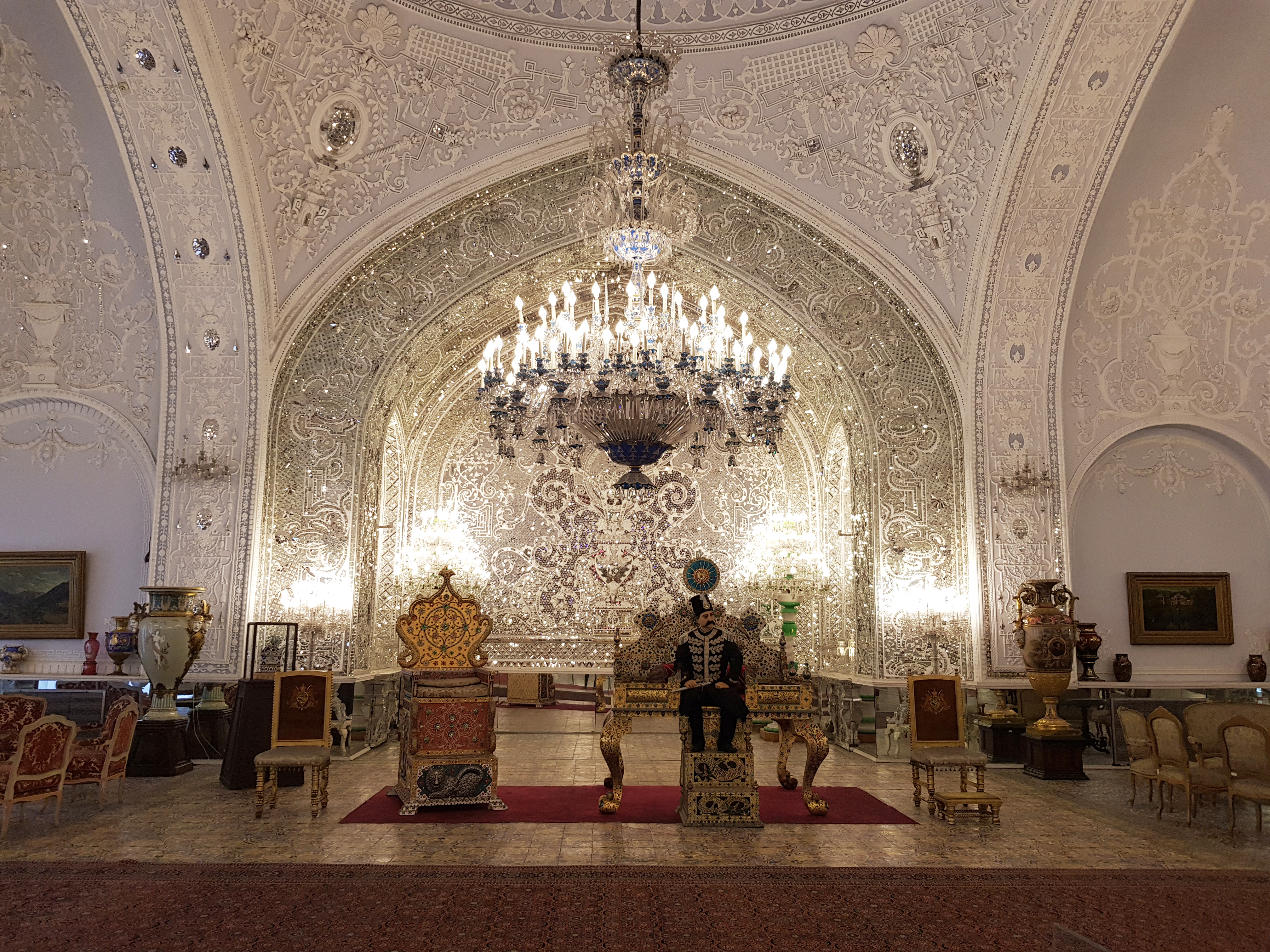
The international heritage of Golestan Palace, standing throughout almost half a millennium.
The original citadel was established in 1609 by king Abbas, the Great. But the enclosure that we know today, was built during the Zand dynasty.
After defeating them, Agha Mohammad Khan chose Tehran as his capital. The coronation ceremony increased the importance of the citadel. Due to several trips to Europe, His grandson, Naser, ordered remarkable and frequent constructions in the area. The coronation of the last Pahlavi king was the last grand event held in the palace.
SEE MORE
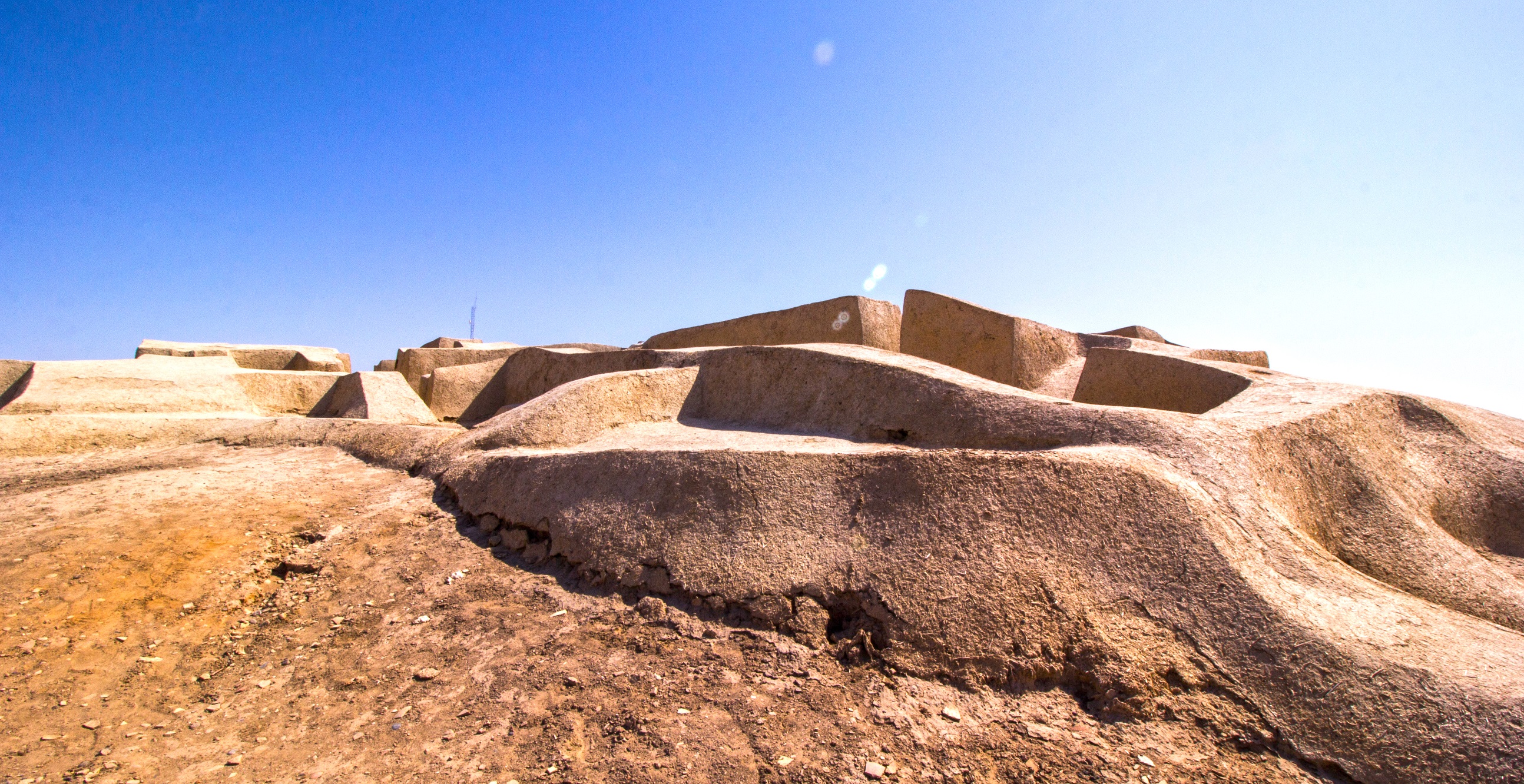
Shahr-i Sokhta, meaning ‘Burnt City’, is located at the junction of Bronze Age trade routes crossing the Iranian plateau. The remains of the mudbrick city represent the emergence of the first complex societies in eastern Iran. Founded around 3200 BC, it was populated during four main periods up to 1800 BC, during which time there developed several distinct areas within the city: those where monuments were built, and separate quarters for housing, burial, and manufacture. Diversions in watercourses and climate change led to the eventual abandonment of the city in the early second millennium. The structures, burial grounds and a large number of significant artifacts unearthed there, and their well-preserved state due to the dry desert climate, make this site a rich source of information regarding the emergence of complex societies and contacts between them in the third millennium BC. SEE MORE
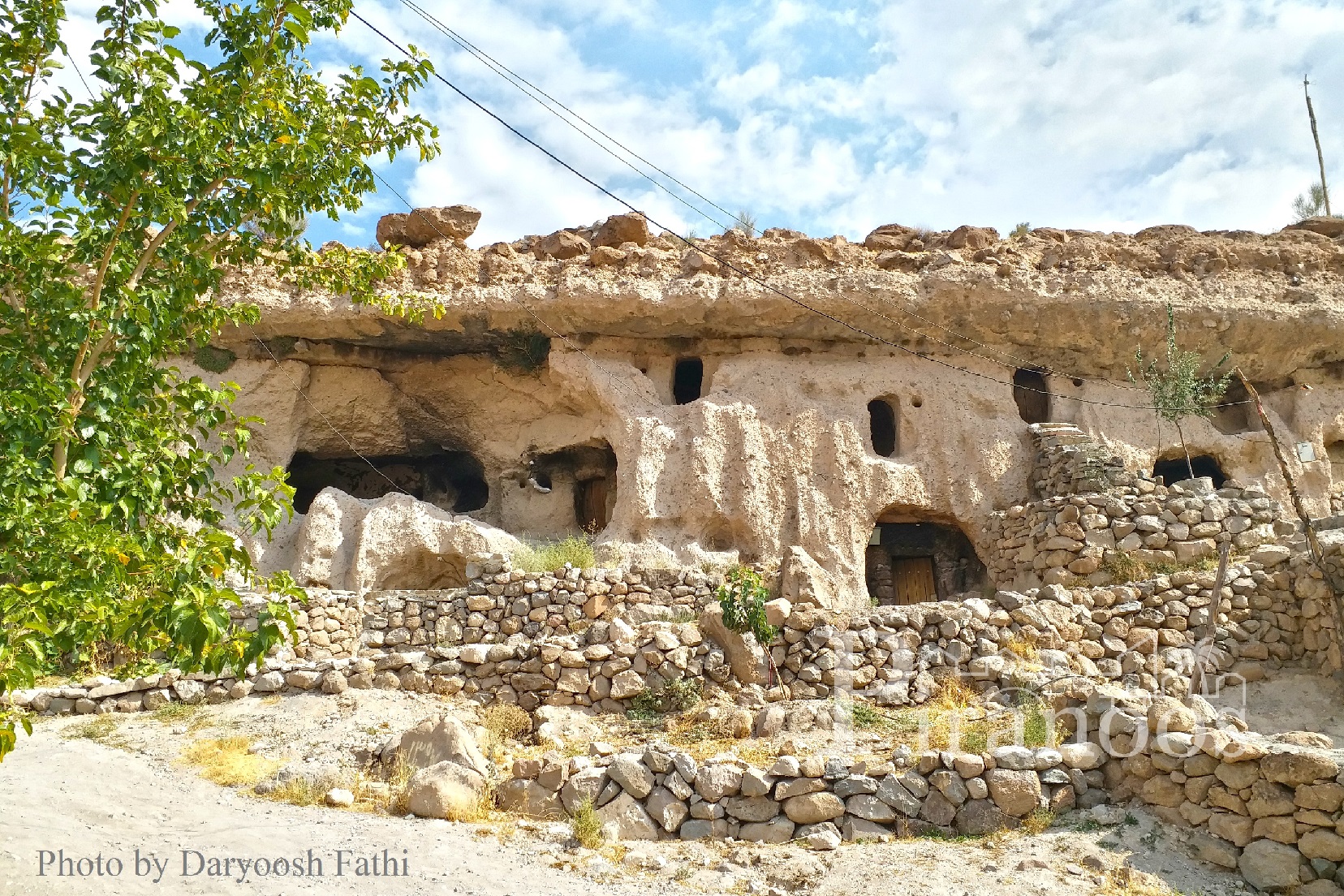
Maymand is a self-contained, semi-arid area at the end of a valley at the southern extremity of Iran’s central mountains. The villagers are semi-nomadic agro-pastoralists. They raise their animals on mountain pastures, living in temporary settlements in spring and autumn. During the winter months, they live lower down the valley in cave dwellings carved out of the soft rock (kamar), an unusual form of housing in a dry, desert environment. This cultural landscape is an example of a system that appears to have been more widespread in the past and involves the movement of people rather than animals.
SEE MORE
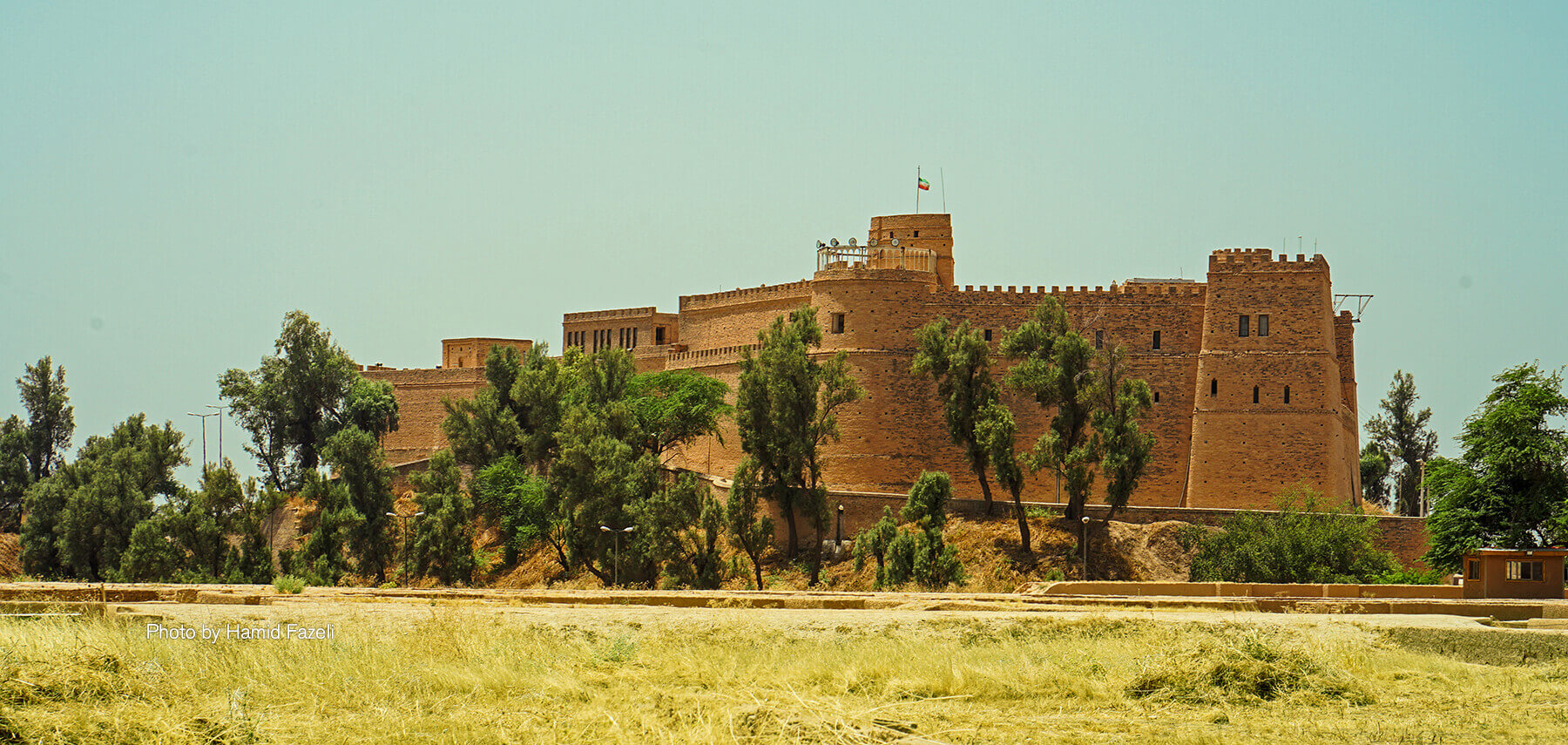
The Shush Castle also is known as Acropolis of Susa or the French Castle was constructed by French archaeologist Jean-Marie Jacques de Morgan in the late 1890s as a secure base for archaeological studies and excavation in the area. Built by local masons on the ruins of the ancient city of Susa with bricks taken from two archaeological sites, the Achaemenid Darius palace, and the Elamite Choqazanbil ziggurat, the Castle is similar to medieval monuments in France. The structure was built atop a hill which may contain other pre-historic remnants. As a museum, it was famous for holding a cuneiform tablet inscribed with the Code of Hammurabi which, however, is now on display in the Louvre Museum.
SEE MORE
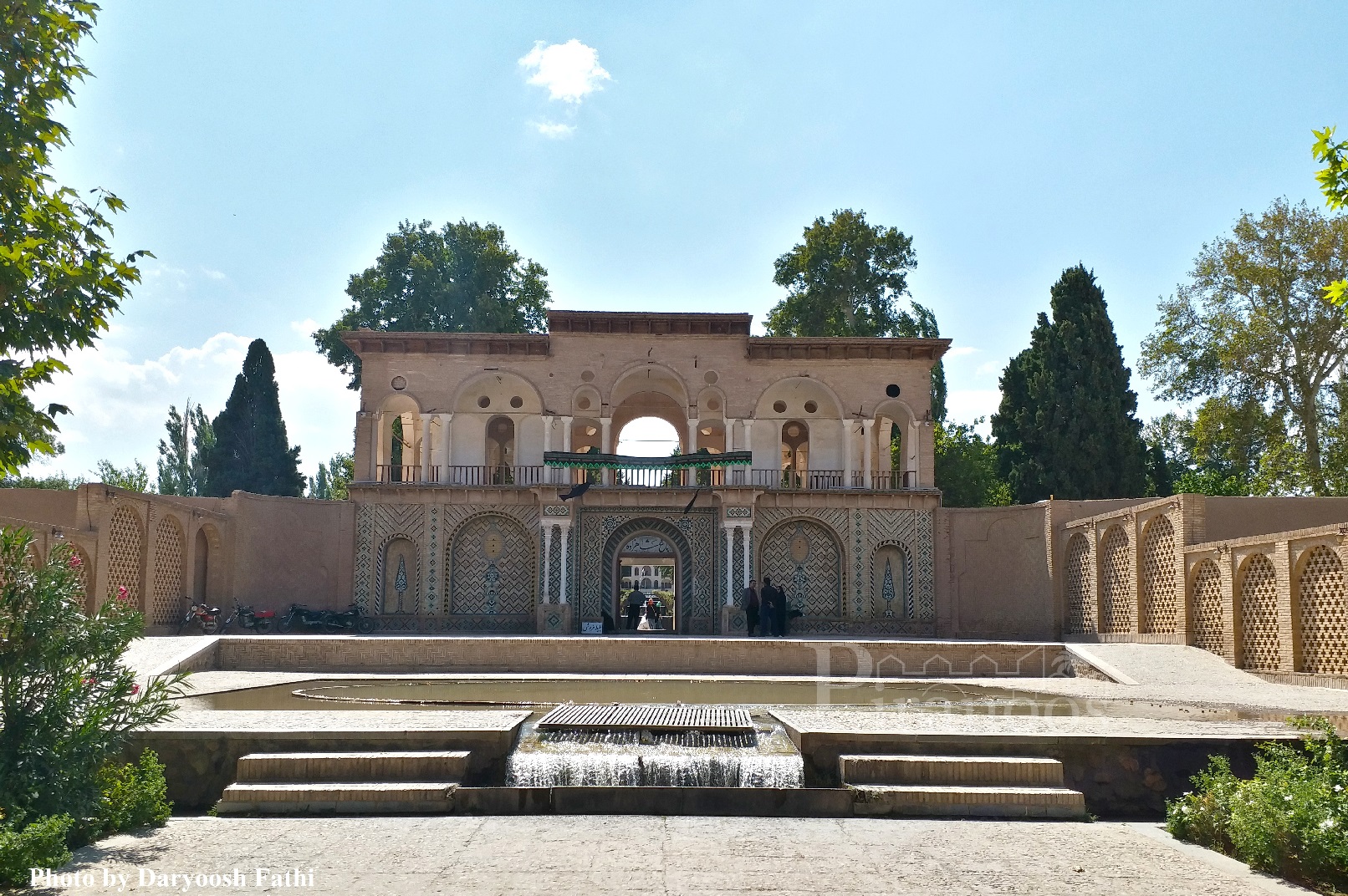
Throughout the arid regions of Iran, agricultural and permanent settlements are supported by the ancient qanat system of tapping alluvial aquifers at the heads of valleys and conducting the water along underground tunnels by gravity, often over many kilometers. The eleven qanats representing this system include rest areas for workers, water reservoirs and watermills. The traditional communal management system still in place allows equitable and sustainable water sharing and distribution. The qanats provide exceptional testimony to cultural traditions and civilizations in desert areas with an arid climate.
SEE MORE
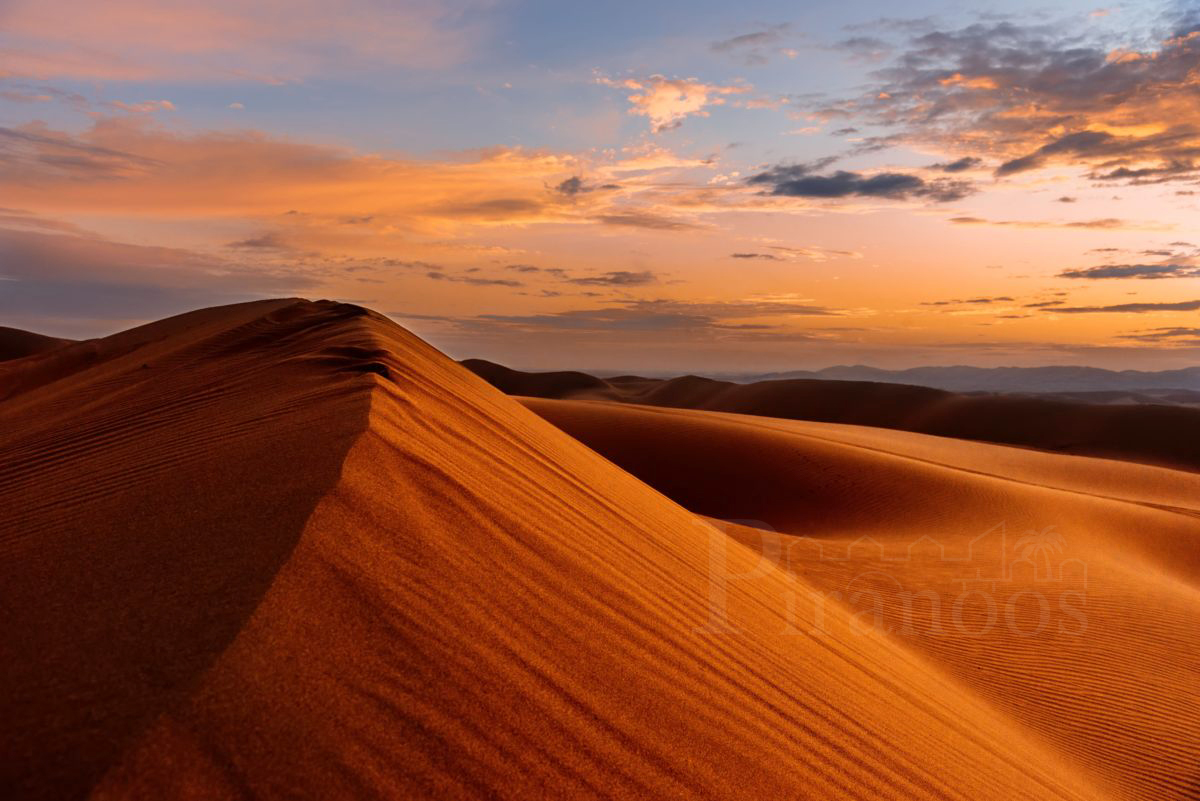
The Lut Desert, or Dasht-e-Lut, is located in the south-east of the country. Between June and October, this arid subtropical area is swept by strong winds, which transport sediment and cause aeolian erosion on a colossal scale. Consequently, the site presents some of the most spectacular examples of aeolian yardang landforms (massive corrugated ridges). It also contains extensive stony deserts and dune fields. The property represents an exceptional example of ongoing geological processes.
SEE MORE
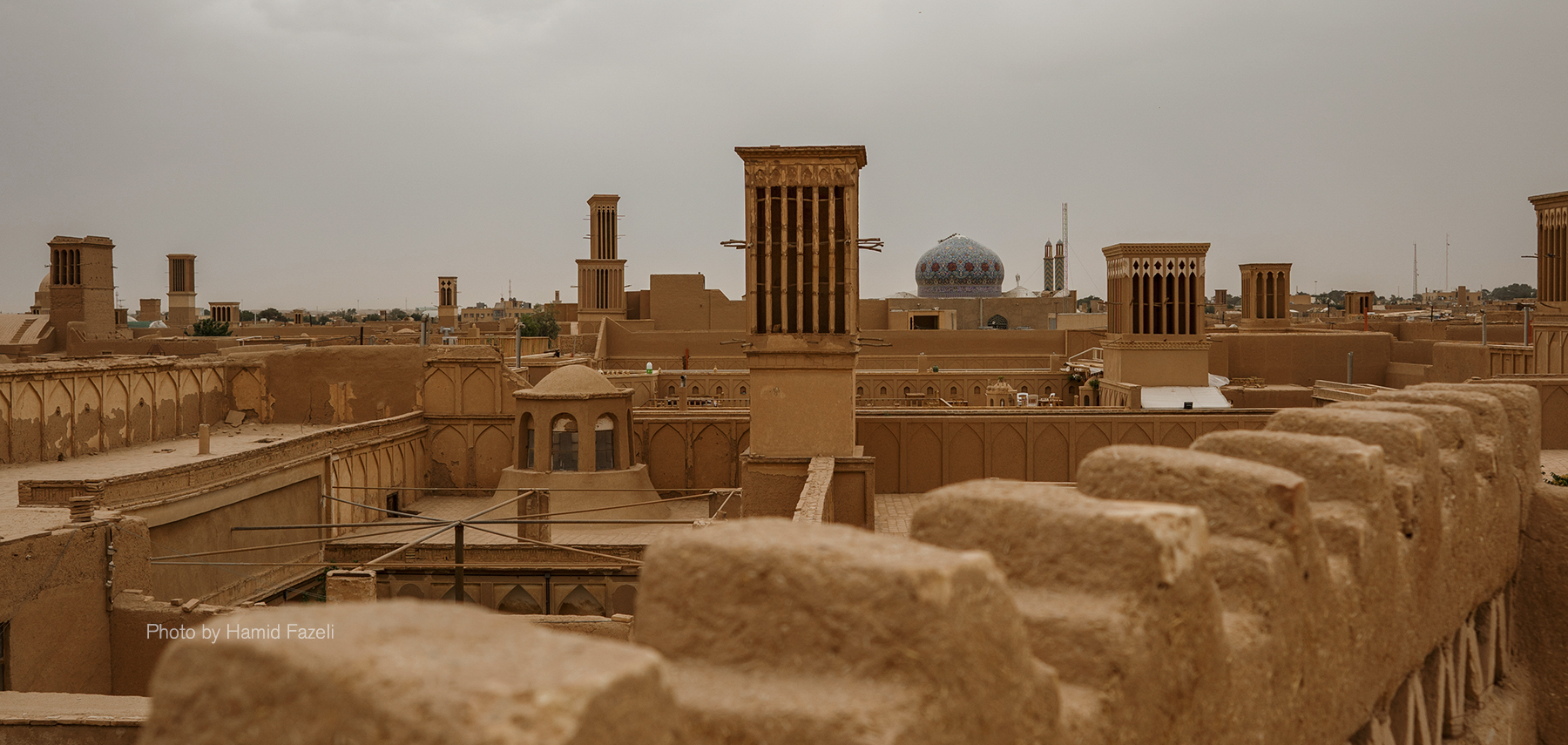
Yazd, the second historical city in the world, is located in the exact geographical center of Iran. The city was built by the order of king Yazdgerd from the Sasani dynasty, around 400 AD and it was named after him. ”Yazd” also means “to pray” in Pahlavi language, the mother tongue of Zoroastrians. It’s interesting to know that during history, the rulers and people were considerably faithful to God, no matter the dominant religion, hence Yazd is also known as “the city of worship”.
SEE MORE
The eight archaeological sites situated in three geographical areas in the southeast of Fars Province: Firuzabad, Bishapur and Sarvestan. The fortified structures, palaces and city plans date back to the earliest and latest times of the Sassanian Empire, which stretched across the region from 224 to 658 CE. Among these sites is the capital built by the founder of the dynasty, Ardashir Papakan, as well as a city and architectural structures of his successor, Shapur I. The archaeological landscape reflects the optimized utilization of natural topography and bears witness to the influence of Achaemenid and Parthian cultural traditions and of Roman art, which had a significant impact on the architecture of the Islamic era.
SEE MORE
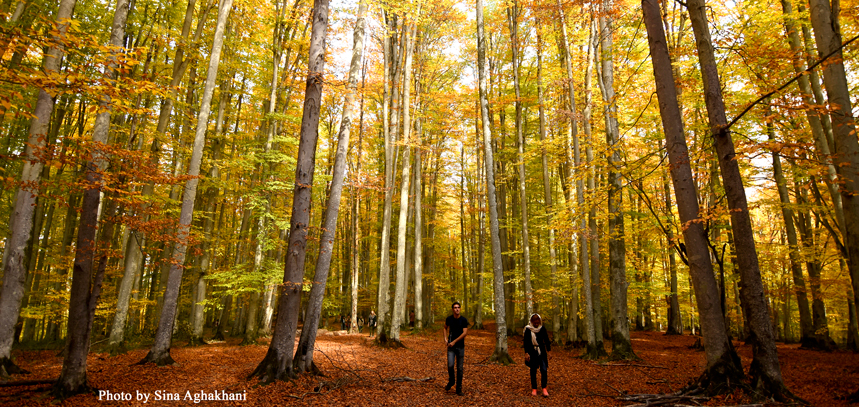
Hyrcanian forests form a unique forested massif that stretches 850 km along the southern coast of the Caspian Sea. The history of these broad-leaved forests dates back 25 to 50 million years when they covered most of this Northern Temperate region. These ancient forest areas retreated during the Quaternary glaciations and then expanded again as the climate became milder. Their floristic biodiversity is remarkable: 44% of the vascular plants known in Iran are found in the Hyrcanian region, which only covers 7% of the country. To date, 180 species of birds typical of broad-leaved temperate forests and 58 mammal species have been recorded, including the iconic Persian Leopard (Panthera pardus tulliana).
SEE MORE